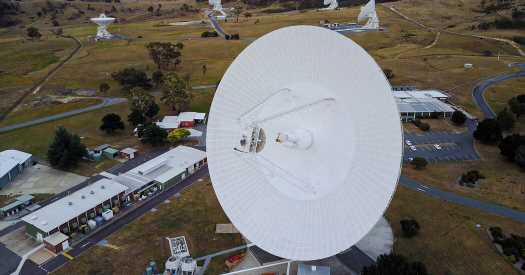It took an interstellar “shout” across the solar system. But NASA’s Jet Propulsion Laboratory said on Friday that it re-established full communications with Voyager 2, an aging probe exploring the outer edges of the solar system.
“After two weeks of not hearing anything, we’re back to getting unique data from the interstellar medium,” said Linda Spilker, a planetary scientist at the Jet Propulsion Laboratory and the lead mission scientist for Voyager 2.
The space agency lost contact with Voyager 2 on July 21 when the mission team accidentally sent a command that pushed the spacecraft’s antenna two degrees away from Earth. On Tuesday morning, officials from the Deep Space Network, a worldwide system of radio dishes NASA uses to communicate with various space probes, detected a carrier signal known as a “heartbeat” from Voyager 2. It was too faint to extract any data, but enough to confirm that the mission was still operating.
Nonetheless, being able to pick up only the heartbeat “was upsetting and worrisome,” said Suzanne Dodd, the project manager for Voyager 2.
The mission team hatched a plan to send a command on Wednesday reorienting Voyager 2’s antenna back to Earth, using a Deep Space Network radio dish in Canberra, Australia.
The chances of success were slim, according to a spokeswoman at the Jet Propulsion Laboratory. It took 37 hours to know whether the attempt was successful — 18.5 hours for the signal to make it to Voyager 2, and another 18.5 for the data to return.
Ms. Dodd said the waiting period “was pretty nervewracking. You don’t sleep well.”
Scientists, engineers and the flight team were “waiting on pins and needles to hear back from Voyager 2, to see if the command was successful,” Dr. Spilker said. “It was all hands on deck.”
But it worked: On Friday at 12:29 a.m. Eastern time, Voyager 2 began transmitting science data once again. Scientists also confirmed that the probe remained on its original path.
According to Dr. Spilker, mission control in California reacted to the good news with a lot of high fives, tears and sighs of relief.
Voyager 2 launched to space on Aug. 20, 1977, to fly by the solar system’s outer planets and then explore the interstellar space that lies beyond it. The nearly 46-year-old probe is currently more than 12.5 billion miles away from Earth and is collecting data on the distant region of space for scientists to study. Its twin, Voyager 1, was launched weeks after Voyager 2 and became the first to cross the solar system’s boundary.
Had it not established contact, the mission team would have had to wait until Oct. 15, when Voyager 2 is programmed to do an automatic reset of the direction of its antenna.
But it no longer needs to wait, and the mission has resumed data transmissions from beyond the solar system’s heliosphere.
“We did an assessment and the spacecraft looks very healthy, very normal,” Ms. Dodd said. The mission team will continue to run tests to fully understand the status of the spacecraft before resuming regular activity.
Ms. Dodd looks forward to celebrating the probe’s launch anniversary later this month. “Both of these spacecraft are truly remarkable in their longevity,” she said, referring to Voyager 2 and Voyager 1. “They’re like the spacecraft with nine lives.”
Katrina Miller is a science reporting fellow for The Times. She recently earned her Ph.D. in particle physics from the University of Chicago. More about Katrina Miller
Source: Read Full Article
